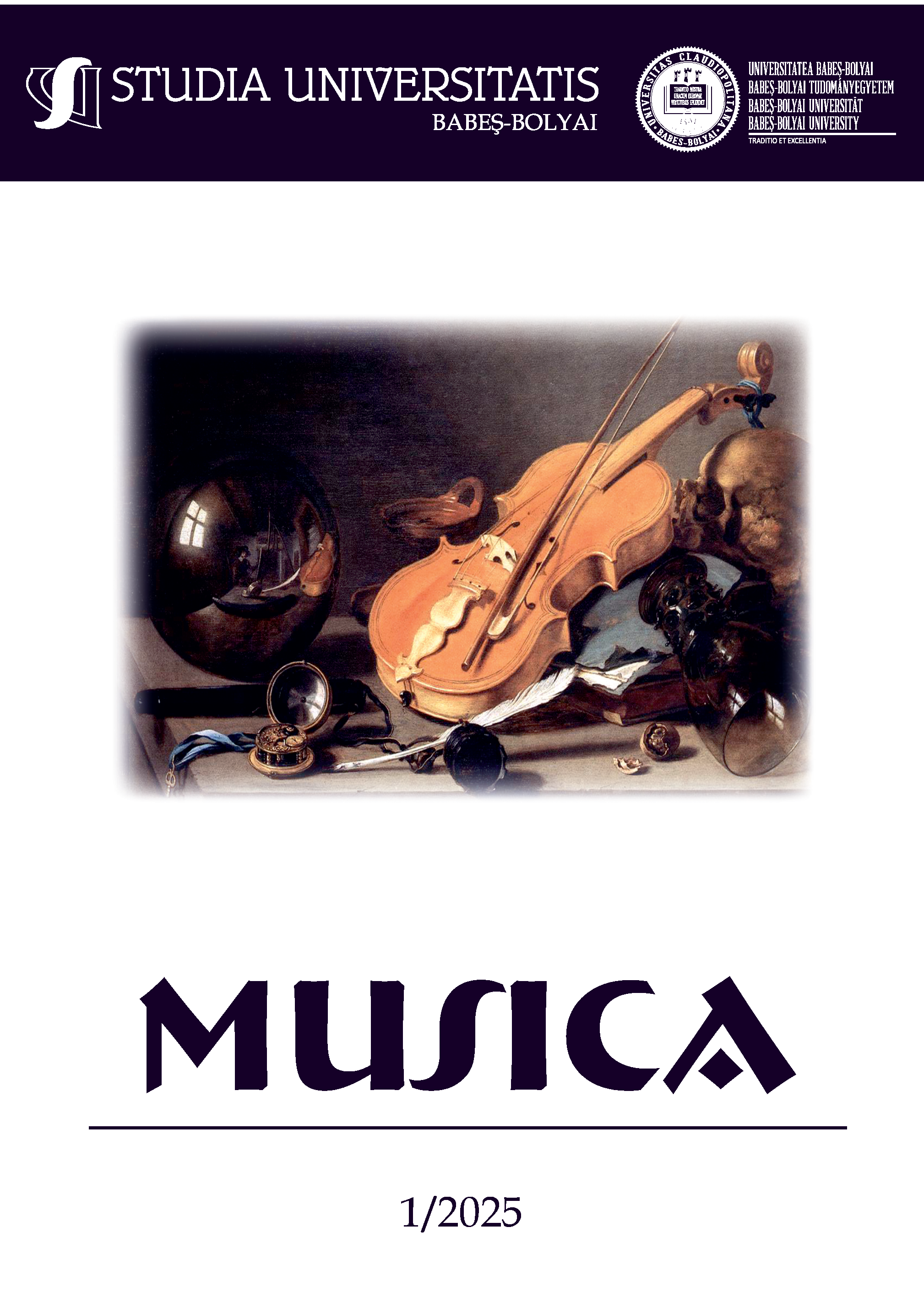“Adagietto” by Gustav Mahler in the Performance Practice of Chinese Conductors: Interpretative Aspects
DOI:
https://doi.org/10.24193/subbmusica.2025.1.13Keywords:
performance interpretation, conducting practice, Long Yu, orchestral dramaturgy, cultural adaptation, Chinese orchestras, Сhinese musical culture, European musical tradition, Gustav Mahler’s symphoniesAbstract
This article explores the distinctive features of the performance interpretation of Gustav Mahler’s symphonies within the context of contemporary Chinese conducting practice. It identifies the main trends in how Chinese orchestras are engaging with Mahler’s symphonic repertoire, as well as their interpretive strategies. The conducting style of Long Yu is analyzed in comparison with the interpretative tradition of Leonard Bernstein, allowing for a deeper understanding of the differences between Eastern and Western approaches to Mahler’s orchestral dramaturgy. Comparative analysis of tempo-rhythmic development, dynamic balance, and orchestral texture in various conductors’ performances highlights the influence of cultural traditions on interpretative practice. The growing interest in Mahler’s symphonies in China is shown to contribute not only to the expansion of national orchestral repertoires but also to the emergence of new performance standards that integrate European traditions with local stylistic characteristics. The findings make it possible to broaden the musicological panorama of the modern reception of Mahler’s symphonies and contribute to further research into the processes of cultural adaptation of European academic music to the East Asian artistic space.
References
1. Barsova, Irina. Symphonies of Gustav Mahler. Moscow: Soviet Composer. 1975.
2. Floros, Constantin. Gustav Mahler: The Symphonies. Amadeus Press. 2003.
3. Hurwitz, David. The Mahler symphonies: an owner’s manual. Pompton Plains, NJ: Amadeus Press. 2004.
4. Lebrecht, Norman. Why Mahler?: How One Man and Ten Symphonies Changed the World. Faber & Faber. 2011.
5. Lin, Hengzhe. 林衡哲.《西方音樂巨人:馬勒》.台北縣:望春風文化 (Mahler, the giant of Western music: My time has come). Yuanliu. 2011.
6. Mitchell, Donald. Gustav Mahler: Songs and Symphonies of Life and Death. Interpretations and Annotations. Boydell Press. 2002.
7. Ulm, Renate. Gustav Mahlers Symphonien: Entstehung, Deutung, Wirkung (Bärenreiter-Werkeinführungen). Bärenreiter Verlag. 2018.
Downloads
Published
How to Cite
Issue
Section
License
Copyright (c) 2025 Studia Universitatis Babeş-Bolyai Musica

This work is licensed under a Creative Commons Attribution-NonCommercial-NoDerivatives 4.0 International License.



